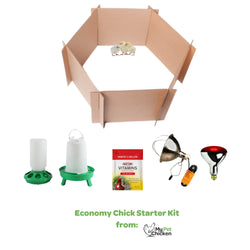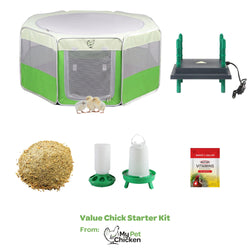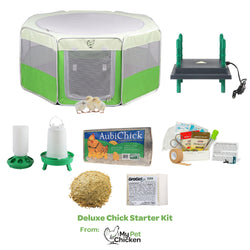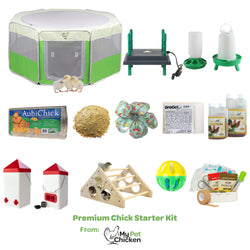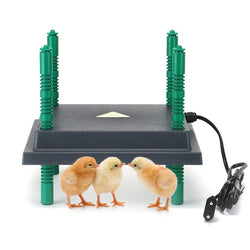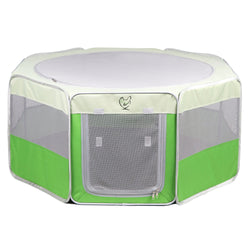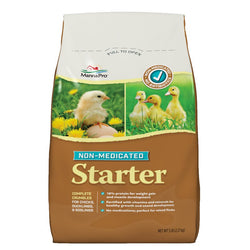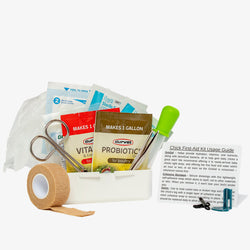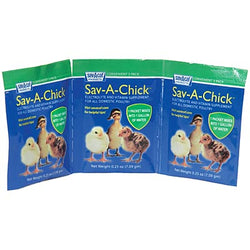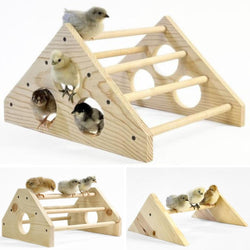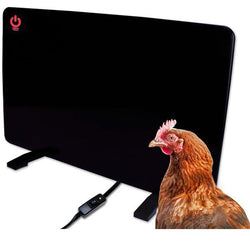Why do chicken combs look so different from one another, and what is a comb?
Back to blog
A comb is the fleshy (usually) red erectile tissue on top of a chicken's head. Different breeds have different combs. There are a few main comb types.
A single comb is probably what you think of when you think of a chicken's comb. It has a single row of spiky fingers sticking up from a "blade." But all single combs are not alike. Some can be large and others quite small. Not only does it vary by breed, but it also varies by individual.This is why the size of a comb is not a good way to tell roosters from hens.
Here's a small single comb on an orpington hen

Now check out this single comb:

Think that's a rooster? Think again. That is a leghorn hen. Leghorn hens just have large single combs (often flopsy, as you can see in the photo). The comb helps chickens cool down in hot weather. Since leghorns were developed in Italy, they have large combs that allow them to deal with the heat fairly well. However, those pointy fingers on the large combs of leghorns are pretty susceptible to frostbite in cold winter areas.
By contrast to a single comb, a rose comb is flat with no rows of spikes.

A pea comb is even smaller; a perfect pea comb will have three tiny rows of little peas.

Even rooster pea combs tend to be small. Ish. Call them small-ish.

A walnut comb is large, irregular and knobby, and the basic walnut genetics make up a lot of other comb types, such as the cushion and strawberry.
A cushion comb looks like a very small rose comb without the point, or a pea comb without the peas. There are simply modifiers than can make the walnut comb appear as a small, smooth cushion comb, a slightly larger strawberry comb, or the large bumpy walnut comb. Silkies are said to have the basic walnut... but silkie comb genetics get a little complex, actually, and depending on whether you have bearded or unbearded (and what is in the background), you may technically have a modified rose comb/trifid comb OR a walnut comb. Or maybe some other variations in there, too. If we had to guess why there's so much variation, we'd guess that because the most obvious characteristic of the Silkie is its fluffy, fur-like feathers, as different colors have been developed, the genetic make-up of the comb was probably less important. Silkie hens' crests are often hidden beneath the crest, too. You can usually see Silkie roosters' combs once they become mature, though.

There are other less common comb types. Sultans and LaFleches (among others) have a variation of a V comb.

Penedesencas and empordanesas have a carnation comb, which is like a single comb with little side sprigs in the back. You can just see them in this photo if you look closely:

Sicilians have a buttercup comb, which is like two single combs side by side.

Does comb shape matter that much? Yes and no. If you live in an area of extreme cold, you'll want to remember that combs with thin spikes or sprigs are more likely to get frostbitten. But comb size and shape isn't the only thing that makes a bird tolerant of cold or hot weather, so you'll want to choose the right breed based on a variety of factors. Read more about choosing cold hardy breeds and heat hardy breeds on our blog. |||comb, combs, rooster comb, cushion comb, carnation comb, strawberry comb, walnut comb, chicken comb, pea comb, rose comb, modified rose comb, comb genetics|False 286|Can I give my chickens wild birdseed mix?| Birdseed mixes are usually too high in fat and too low in vitamins (especially when the mixes are high in millet and cracked corn) to meet the long-term nutritional needs of a laying flock. They're also way too low in calcium. Remember, modern domestic chickens lay lots of eggs year-round, while wild birds may lay only a few eggs a year, seasonally. So seed mixes designed for wild birds just won't make a good, well-balanced diet for your flock.
Still, as an occasional treat, your chickens will love it! And many seeds are high in SOME vitamins and amino acids that your birds do need. Even better, some research shows that a diet that contains certain whole grains and seeds may be associated with chickens being able to better stave off salmonella infections. You can see those studies here:
The Influence of Whole Wheat Feeding on Salmonella Infection and Gut Flora Composition in Broilers
Influence of Housing System, Grain Type, and Particle Size on Salmonella Colonization and Shedding of Broilers Fed Triticale or Corn-Soybean Meal Diets
So feel free to offer them wild birdseed. In moderation, as a treat, it can even be quite healthy!
A single comb is probably what you think of when you think of a chicken's comb. It has a single row of spiky fingers sticking up from a "blade." But all single combs are not alike. Some can be large and others quite small. Not only does it vary by breed, but it also varies by individual.This is why the size of a comb is not a good way to tell roosters from hens.
Here's a small single comb on an orpington hen

Now check out this single comb:

Think that's a rooster? Think again. That is a leghorn hen. Leghorn hens just have large single combs (often flopsy, as you can see in the photo). The comb helps chickens cool down in hot weather. Since leghorns were developed in Italy, they have large combs that allow them to deal with the heat fairly well. However, those pointy fingers on the large combs of leghorns are pretty susceptible to frostbite in cold winter areas.
By contrast to a single comb, a rose comb is flat with no rows of spikes.

A pea comb is even smaller; a perfect pea comb will have three tiny rows of little peas.

Even rooster pea combs tend to be small. Ish. Call them small-ish.

A walnut comb is large, irregular and knobby, and the basic walnut genetics make up a lot of other comb types, such as the cushion and strawberry.
A cushion comb looks like a very small rose comb without the point, or a pea comb without the peas. There are simply modifiers than can make the walnut comb appear as a small, smooth cushion comb, a slightly larger strawberry comb, or the large bumpy walnut comb. Silkies are said to have the basic walnut... but silkie comb genetics get a little complex, actually, and depending on whether you have bearded or unbearded (and what is in the background), you may technically have a modified rose comb/trifid comb OR a walnut comb. Or maybe some other variations in there, too. If we had to guess why there's so much variation, we'd guess that because the most obvious characteristic of the Silkie is its fluffy, fur-like feathers, as different colors have been developed, the genetic make-up of the comb was probably less important. Silkie hens' crests are often hidden beneath the crest, too. You can usually see Silkie roosters' combs once they become mature, though.

There are other less common comb types. Sultans and LaFleches (among others) have a variation of a V comb.

Penedesencas and empordanesas have a carnation comb, which is like a single comb with little side sprigs in the back. You can just see them in this photo if you look closely:

Sicilians have a buttercup comb, which is like two single combs side by side.

Does comb shape matter that much? Yes and no. If you live in an area of extreme cold, you'll want to remember that combs with thin spikes or sprigs are more likely to get frostbitten. But comb size and shape isn't the only thing that makes a bird tolerant of cold or hot weather, so you'll want to choose the right breed based on a variety of factors. Read more about choosing cold hardy breeds and heat hardy breeds on our blog. |||comb, combs, rooster comb, cushion comb, carnation comb, strawberry comb, walnut comb, chicken comb, pea comb, rose comb, modified rose comb, comb genetics|False 286|Can I give my chickens wild birdseed mix?| Birdseed mixes are usually too high in fat and too low in vitamins (especially when the mixes are high in millet and cracked corn) to meet the long-term nutritional needs of a laying flock. They're also way too low in calcium. Remember, modern domestic chickens lay lots of eggs year-round, while wild birds may lay only a few eggs a year, seasonally. So seed mixes designed for wild birds just won't make a good, well-balanced diet for your flock.
Still, as an occasional treat, your chickens will love it! And many seeds are high in SOME vitamins and amino acids that your birds do need. Even better, some research shows that a diet that contains certain whole grains and seeds may be associated with chickens being able to better stave off salmonella infections. You can see those studies here:
The Influence of Whole Wheat Feeding on Salmonella Infection and Gut Flora Composition in Broilers
Influence of Housing System, Grain Type, and Particle Size on Salmonella Colonization and Shedding of Broilers Fed Triticale or Corn-Soybean Meal Diets
So feel free to offer them wild birdseed. In moderation, as a treat, it can even be quite healthy!
